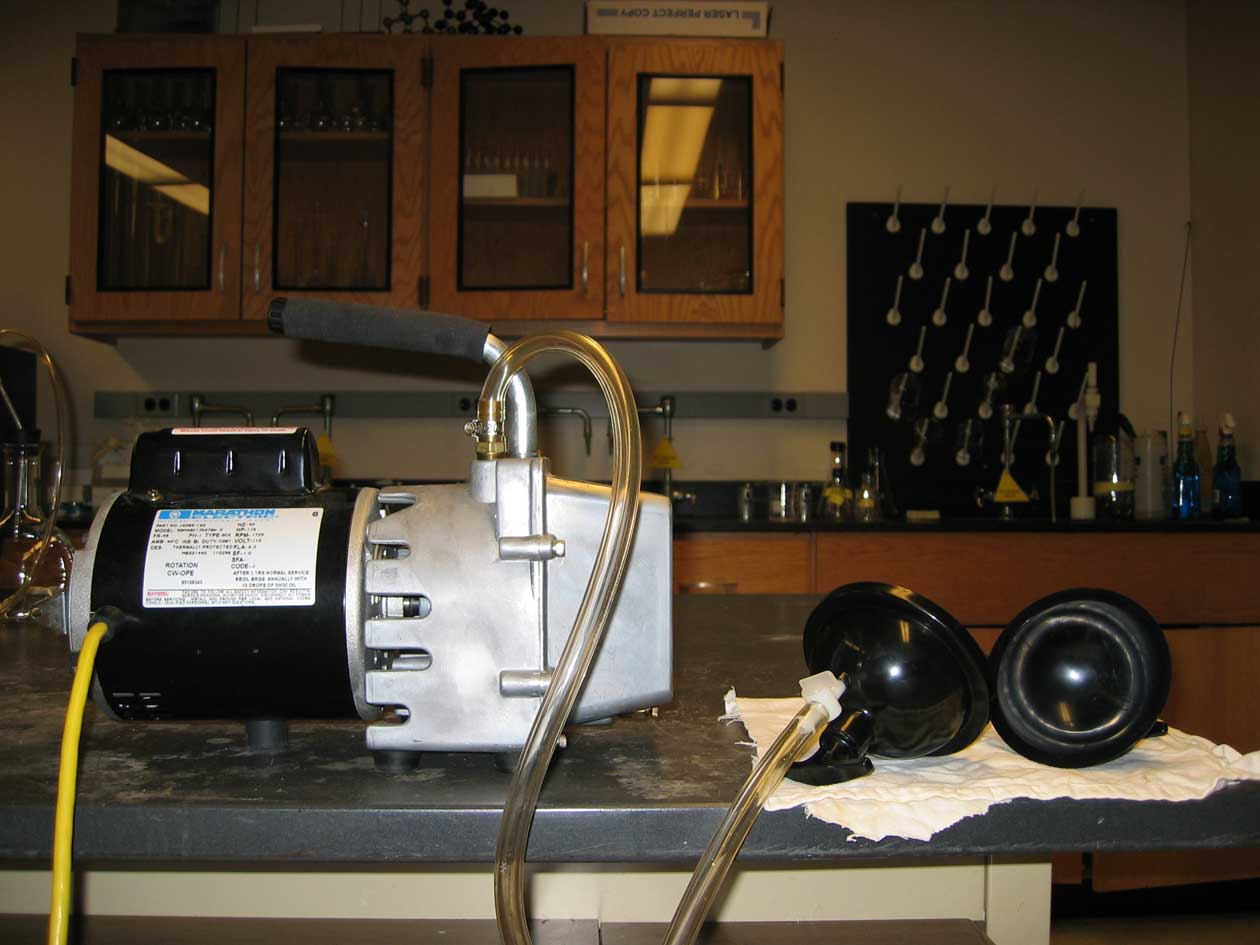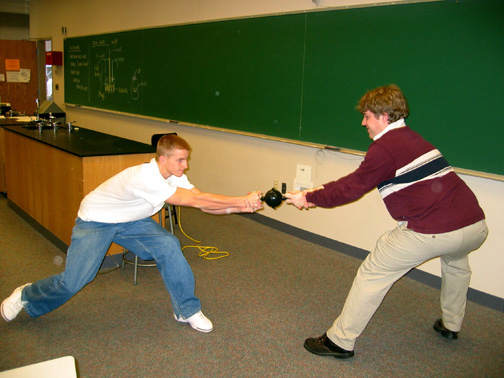Appreciating the enormity of "atmospheric pressure"
 The classic Magdeburg Spheres experiment is repeated, with the teams of horses replaced by two students.
The classic Magdeburg Spheres experiment is repeated, with the teams of horses replaced by two students.
Ingredients: plastic hemispheres with tight fitting seal and vacuum "spout," vacuum tubing, vacuum pump
Procedure: A complete recipe follows.
1. Unite hemispheres with open vacuum spout to see that they are easily separated.
2. Unite hemispheres and use vacuum pump to evacuate sphere of air.
3. Close vacuum spout and remove vacuum pump.
4. Attempt to separate spheres.
Otto von Guericke (1602-1686) is known as the inventor of the vacuum pump. In 1663 in Magdeburg (now in Germany), before the Holy Roman Emperor Ferdinand III, he created a phenomenal demonstration of the magic of a vacuum. Using teams of horses, he attempted
to separate two hemispheres that had been joined and evacuated. The "Magdeburg Spheres" remained joined, held together by the great force of atmospheric pressure.
 Understanding:
When the spout is open, the pressure inside the spheres pressing outward is the same as the pressure outside the spheres pressing inward. The net force on the hemispheres due to the pressure of the air within and without the sphere cancels and plays no role in the ease or difficulty of separating the hemispheres.
Understanding:
When the spout is open, the pressure inside the spheres pressing outward is the same as the pressure outside the spheres pressing inward. The net force on the hemispheres due to the pressure of the air within and without the sphere cancels and plays no role in the ease or difficulty of separating the hemispheres.
Larger or smaller spheres
Question:
Suppose that the outside pressure is one atmosphere and that the sphere contains no gas whatsoever. Will the force required to separate the hemispheres depend upon the size of the sphere?